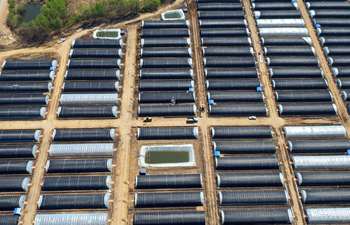CANBERRA, May 12 (Xinhua) -- A team of international scientists led by those at Australia's University of Adelaide have discovered 467 million hectares of "previously unreported forest," in a development which could help improve the accuracy of global carbon modelling and lead to new conservation efforts.
The scientists discovered the previously unreported forests, which increases the current global "forest cover" by 10 percent, on all continents, with a major focus on uninhabitable areas such as the south of the Sahara desert, central India, rural Australia and parts of South America.
The scientists said the differences in the coverage estimates was stark in Africa, where reported forest regions doubled, something the team has said could revolutionize carbon modeling for climate change and force a re-think in conservation.
In a statement released on Friday, the University of Adelaide's Prof. Andrew Lowe said scientists from more than a dozen organizations analyzed the global distribution of forests and woodlands across drylands.
He said dryland forests were previously difficult to measure using satellite imagery or other remote sensing because of the "relative low density of trees."
"Just when we thought we knew the world, this project shows we are still improving our knowledge and description of natural systems," Lowe said.
"To 'find' an area of forest that represents 10 percent of the global forest cover is very, very significant, with broad consequences for global carbon budgeting and dryland restoration and management.
"It shows that dryland regions have a greater capacity to support trees than previously perceived and understood. With its low opportunity costs, dryland could therefore provide a unique chance to mitigate climate change through large-scale conservation and afforestation actions. It also shows the potential for improved livelihoods of the people in these areas."
According to Lowe's colleague, Associate Professor Ben Sparrow, the teams used more than 210,000 satellite images to calculate global forest cover.
"The main reason for the underestimate of forest cover is that previous land type classifications have been based on older and lower resolution satellite imagery without any kind of ground validation," Sparrow said on Friday.
"This new reassessment has been possible due to access to higher resolution satellite imagery, through Google Earth Engine, as well as the incorporation of ground validated information from TERN's ecological plots."

















